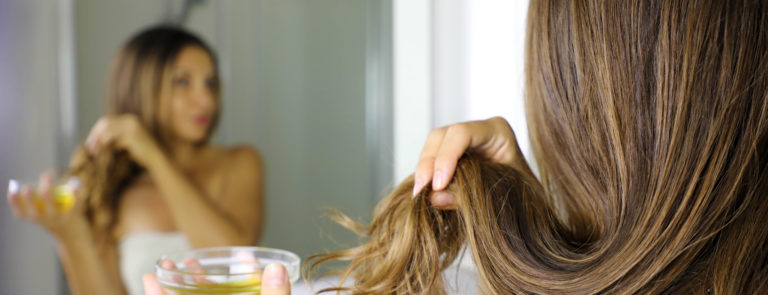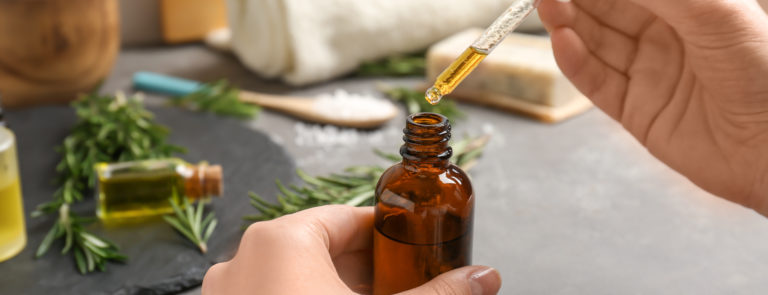10% off £30 OR 15% off £40
How to safely exfoliate your skin

How to safely exfoliate for healthy, radiant skin
Exfoliating your skin is a great way to keep it healthy and remove dead skin from your face and body. However, it’s essential to do it properly.
In this article, we’ll teach you how to exfoliate, its benefits and share some tips for exfoliating for different skin types.
Skip to:
What is exfoliation?
Exfoliation is the process of removing dead cells from your skin. Without exfoliation, your skin may appear flaky and dry, so it’s important to do this fairly regularly.1
You may have heard that exfoliation scrubs away the top layers of dead cells on your skin, which makes it sound harsh, but there are a few different methods that you can use to exfoliate.
How to exfoliate
There are two main methods of exfoliation: mechanical and chemical.1
Usually, the mechanical method uses a scrub or a tool to buff away dead skin cells, whereas chemical exfoliation uses chemicals such as AHAs (alpha hydroxy acids) and BHAs (beta hydroxy acids) to help break down the clusters of dead cells.1
Some of the different tools you can use for exfoliation include body brushes, exfoliating body mitts, sponges, and body or face scrubs. Scrubs are some of the most popular exfoliating products. They range from gentle, fine scrubs to more granular scrubs for those rougher areas of skin.2
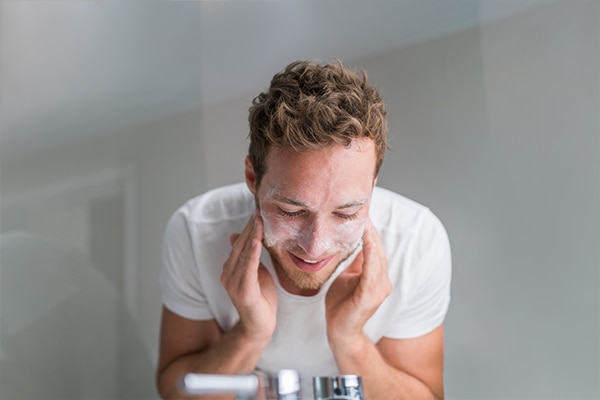

When using a scrub to exfoliate, look out for ingredients like coffee or sea salt, as these are some of the best exfoliators.3
You can even make your own face scrub or a DIY body scrub from ingredients you’ll find in your cupboards at home!
The benefits of exfoliating your skin
Exfoliation has a wide range of benefits and can help keep your skin healthy. Of course, the most obvious benefit is that it removes dead skin cells from the surface of your skin, but that’s not all!
Here are 3 benefits of exfoliating:
-
Brighter skin
Firstly, consistently exfoliating can help brighten your skin. Dead skin cells can make your skin appear dull, but new cells can help change the appearance of your skin to be much brighter.4
-
Smoother skin texture
Exfoliation can also help improve your skin’s texture, removing any rough or dry patches of skin, which can also help with making your skin appear much healthier overall. Brighter and smoother skin can help you achieve a more youthful complexion.4
-
More hydration
Exfoliating can also help keep your skin hydrated. Removing the dead skin cells that clog pores can help your skin absorb other skincare products, such as moisturisers, more effectively.5
Exfoliation for different skin types
Everybody’s skin is different, but most of us fall into one or two skin type categories. Therefore, it’s essential to pay attention to your skin type when exfoliating.
Here, we’ve hopefully made it a little easier for you by detailing how to exfoliate for different skin types1:
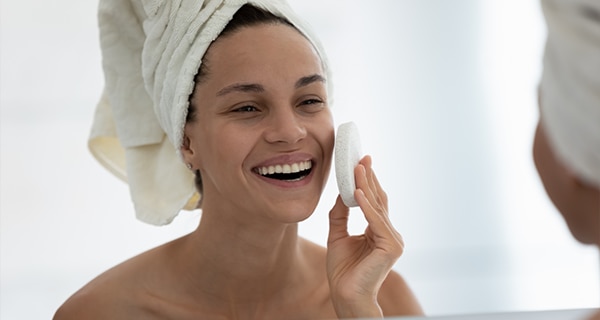

- Oily skin – for oilier skin, mechanical exfoliation is the way to go. Using a physical method to remove dead skin cells may be more effective here, as those with oily skin tend to have more build-up on the surface of their skin.
- Normal skin – if you don’t face many skin issues, you should be free to exfoliate using any method you wish.
- Dry skin – the best option for dry skin is usually using a chemical exfoliant such as an AHA once a week, as using a tool or body scrub for dry skin can actually dry the skin out more.
- Combination skin – try using both methods at different times to see what works best for you. It could be that you have to include both mechanical and chemical exfoliation in your skincare routine.
- Sensitive skin – it’s best to avoid using a tool or body scrub for sensitive skin, since this may be too rough and leave it feeling sensitive. Instead, try a very mild chemical-based exfoliant once a week and be sure to be gentle when you apply and remove it.1
How to exfoliate different body parts
How to exfoliate different body parts
- Face – when using a scrub, use your fingertips to apply it to your face and rinse off with warm water. When using a chemical exfoliant, apply gently with a cotton pad or your fingers and rinse with warm water.1
- Arms and legs – it may be best to use a tool (such as a brush) on your arms and legs to cover more area and help remove dead skin cells more effectively. You can find exfoliating scrubs especially for legs or arms. Of course, this technique should be avoided if you have particularly sensitive skin in these areas. This is great for helping to minimise spots on your legs too!1
- Lips – everyone gets chapped lips sometimes, but using a lip scrub can help to exfoliate your lips.6


Can exfoliation help my skin age healthily?
Exfoliation can help to maintain youthful-looking skin, since removing dead cells can help brighten your complexion and improve skin texture.7
How often should you exfoliate?
If you have drier skin, you may want to stick to exfoliating just once a week, using a gentle exfoliant, but if you have oilier skin, you may be able to exfoliate up to two times a week.1
It is always important, though, to listen to your skin. If your skin feels sore after using any exfoliant, you should avoid using the product again. You should always start slow, too, and work your way up to exfoliating more than once a week.1
Side effects of exfoliating
If you over-exfoliate, this can cause some side effects such as8:
- Sensitivity
- Flaky skin
- Redness
- Overly dry skin
Make sure to pay attention to your skin type and the exfoliators you’re using to avoid over-exfoliation.
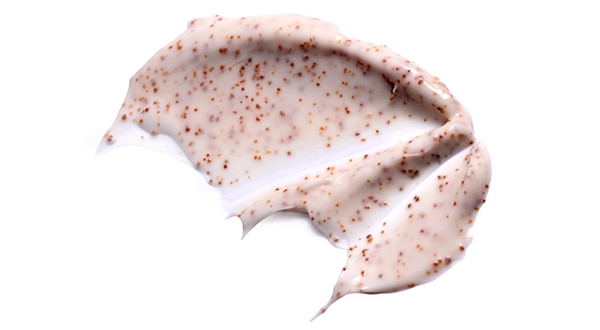

3 top tips for exfoliating your skin
- Think about products you already use or any medication you may be taking. Some products may make your skin more sensitive, so using an exfoliant on top of that can cause sensitivity to your skin. If you’re concerned as to whether an exfoliant will interfere with any other products or conditions, always check with a doctor before using.1
- Choose the right exfoliant for your skin, and be gentle! Always consider your skin type and try to choose an exfoliant that is suitable. But, regardless of your skin type, always be gentle when using an exfoliant and don’t overuse it.
- Keep your skin moisturised afterwards. Once you’ve finished exfoliating, follow up with a moisturiser. This helps keep your skin hydrated and stops it from drying out.9
The final say
Exfoliation is an essential part of your skincare routine, but it can cause problems if you don’t do it properly. When adding exfoliation into your routine, be sure to pay attention to your skin type and any skin concerns you may have.
For more information, check out our article on how to get rid of dead skin.
1. https://www.aad.org/public/everyday-care/skin-care-secrets/routine/safely-exfoliate-at-home
3. https://pubmed.ncbi.nlm.nih.gov/20124857/
4. https://www.ncbi.nlm.nih.gov/pmc/articles/PMC5172479/
5. https://www.ncbi.nlm.nih.gov/pmc/articles/PMC5605215/
6. https://www.aad.org/public/everyday-care/skin-care-basics/dry/heal-dry-chapped-lips
7. https://www.sciencedirect.com/science/article/abs/pii/S0029646507000266
8. https://www.sciencedirect.com/science/article/abs/pii/S0043164812004164
9. https://www.aad.org/public/everyday-care/skin-care-basics/dry/pick-moisturizer

